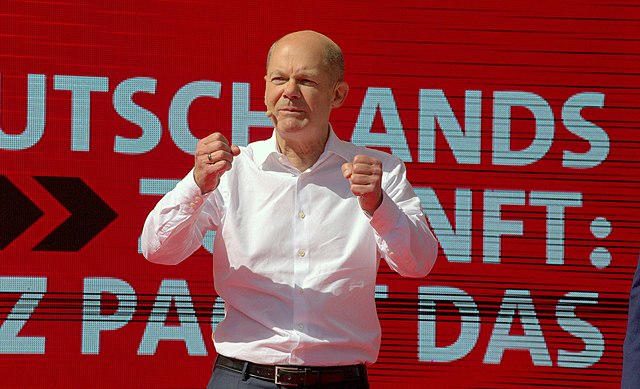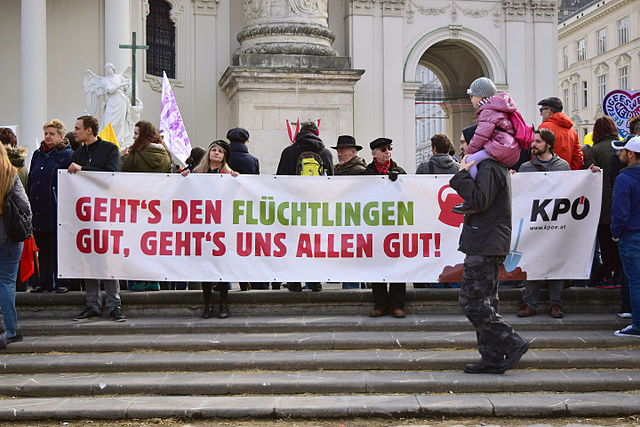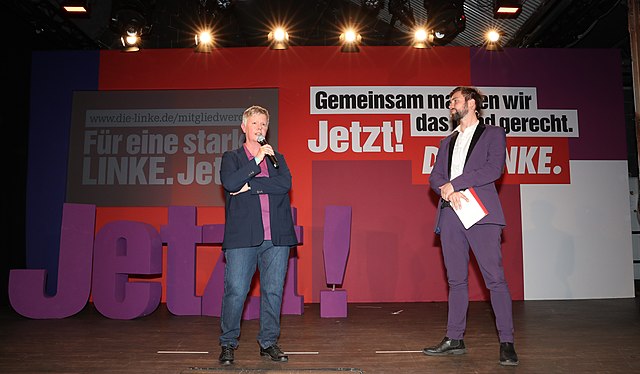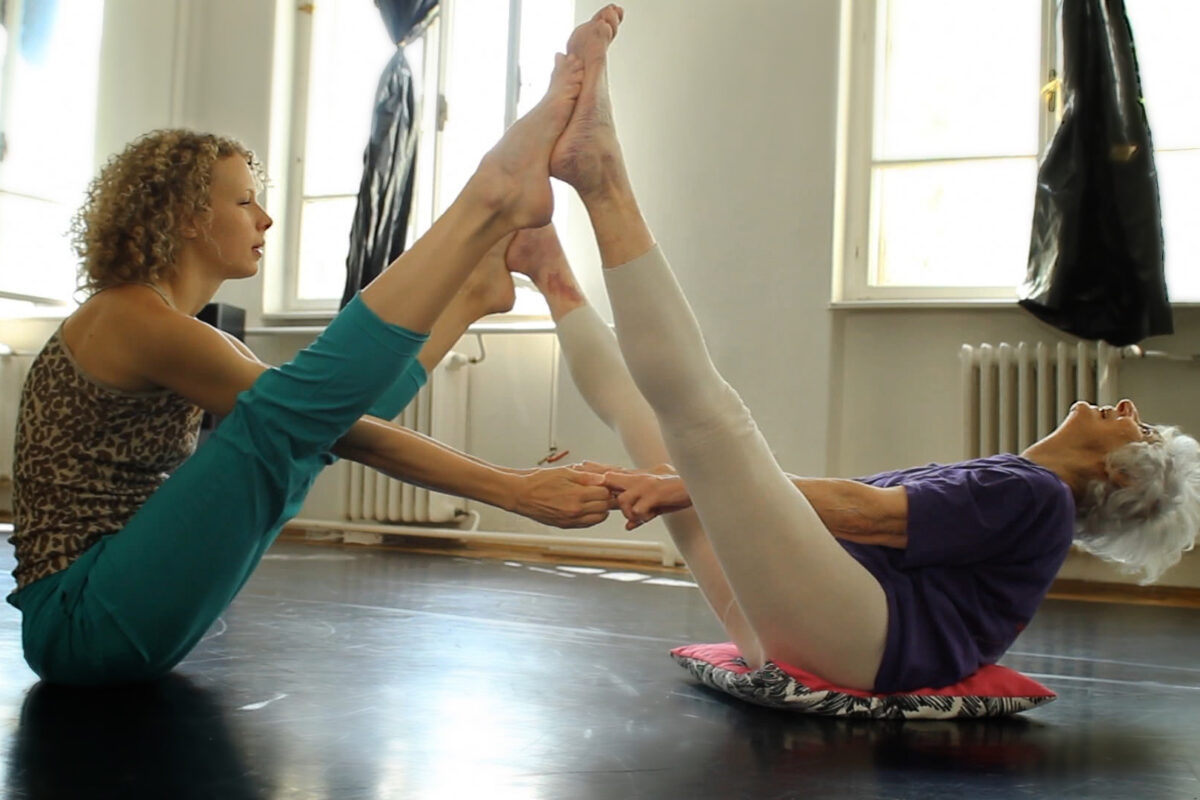Germany’s long election campaign, full of ups and downs, marked the end of 16 more or less placid years with Angela Merkel, 67, and her Christian double party, known as the “Union” (its Bavarian component stays somewhat separate). Until now it had joined up with the Social Democrats (SPD) as increasingly uncomfortable junior partners. But now, without Angela, her unlucky Union followers ended up with the worst vote in their history (24.1 %) and an embarrassing second place.
They were edged out by their SPD ex-partners, headed by Olaf Scholz, 63, with 25.7%. A pillar of the right wing of his party, he is burdened by shady corruption scandals from his earlier days as mayor of Hamburg and his recent years as Minister of Finance. But his confident, nonchalant personality and his party’s position as lesser evil won out after an amazing upward swoop from its hand-wringing debility and despondency less than a year ago.
But to head a new government a majority of the Bundestag seats is necessary. In the past this always required a twosome. But the big chamber, jammed with 735 deputies, is now split up among six (or seven parties if one counts the Bavarian “Christians” separately), making it almost impossible for even two parties to reach a majority; so Olaf Scholz now needs two partners for a threesome. If his attempts fail, the Christians would get the option, and if they can harness up such a troika, they might still get to drive the ruling sleigh despite their second pace in the voting. Their losing leader Armin Laschet is still pressing a political defibrillator with such hopes, but many in his Union blame him for the defeat and now prefer to drop him and his dreams of reversing fate. In this case, fate depends on two smaller parties – the Free Democrats and the Greens – who must join three-player Skat with the Union or with the SPD.
The two always disliked each other. The Free Democrats (FDP), openly and unashamedly favor untaxed, unregulated big business and they downplay ecology. Perhaps due to a well-spoken leader who skilfully sold voters on pure “trickle-down” economics with “digitalization”, the FDP shinned upward to an unexpectedly high 11.5%.
The Greens long scorned such reactionaries. But now, increasingly conservative, they have become friendlier with sectors of big business, especially auto giants like Daimler and Porsche. After an amazing but very brief stay at the top of the ladder in the polls, they slipped back to a far more modest 14.8%, which was still the best in their history. So now, with the Free Democrats smelling a chance at some of those warm, comfortable, perk-laden cabinet seats they have done without for so many years, the two seem to be smoothing over differences and will most likely opt for Olaf. We should soon know their decision.
What about the other two Bundestag parties? The Alternative for Germany (AfD) has now chosen two co-chairs; one from the ranks of more rabid pro-fascists, the other from its cultivated all-for-democracy (“Who? Us Nazis?°) wing, only slightly embarrassed when the other wing betrays all too soon its genuine beliefs and plans. Although the rabid wing won alarming first places in two East German states (Saxony 24.6% and Thuringia 24%), on the national level they only just held on to a two-digit result (10.3%) – far too high but far less than they expected and down 2.3% from 2017. As yet, no other party dares to have anything to do with them.
Disaster for Die LINKE
The most important election result is hardly discussed in the media – and when it is, then with satisfaction or joy. It is, in fact, a truly sad result; DIE LINKE (The Left) came out worst of all the Bundestag parties, losing about two million votes, getting barely over half the 9,2 % it received in 2017 (when it became the leading opposition party) and coming close to losing its entire status in the Bundestag, which requires a vote total of at least 5% in the national vote. The Left, with only 4.9%, was just saved from total defeat by a special rule in Germany’s complex election rules, which I had better explain here:
When Germans vote they make two crosses on their ballots; first, for a candidate in their own district, second, for the party they prefer. The winner of the first vote gets a seat directly. The percentage a party obtains in the second vote determines how many seats it will receive, even if it doesn’t win out in a single district. Who gets these seats is decided by a list chosen by each party before the election; the more crosses obtained in that second column, the more of the nominees on the list will get a seat. If 5% is not reached nationally then none on the list get in, but only those – if any – who won out on their own in their own district. It’s a complicated system but does guarantee smaller parties a voice – if they can reach 5%.
Sadly, the Left missed that red line level – but was miraculously saved by a special rule; if three or more delegates of a party win out in their own districts – with those first crosses – then their parties and their proportionate lists are saved, just as if they had reached 5%. And, thanks be to God or some secular deity, the Left managed to barely squeeze through. Two candidates won seats in (East) Berlin and another in eastern Germany’s second city, Leipzig. Its 4.9% will thus get it 39 seats, far less than the previous 69, but enough to form a caucus with all of its rights, rooms, staff jobs and privileges.
This near total disaster, saved by a thin thread, is of great importance. Germany, the most powerful country in Europe, is intent on economic and military expansion on a scale second only to the USA (and/or China). In a quest for supremacy it still plays second fiddle to the Pentagon and Wall Street but is aiming at bass viol strength. All the German parties support these endeavors, all have ties, some very close, some more complex, with powers-that-be like Bayer-Monsanto, BASF, Daimler, Aldi, Krupp, Rheinmetall, the Deutsche Bank.
All but The Left, that is, with no such ties and alone in opposing a dangerous course which, despite good business with both, moves ever more belligerently towards confrontation with Russia, China or both. A few voices in the SPD have called for the removal of American nuclear bombs from German soil or opposed armed drones, but they were not the voices of Olaf Scholz or Foreign Minister Heiko Maas. As for the Green leaders, they are loudest in demanding that Germany “stand up” to Russia! In the Bundestag the Left has been alone.
Why did the Left lose?
Why, oh why has the Left lost so severely, reducing its solo voice to an even smaller whisper?
One reason, doubtless, was a red-baiting campaign by the Union’s Armin Laschet. In the last weeks of the campaign, desperate to regain party strength, he warned dramatically of a threatening SPD-Green-Left take-over which would plunge poor Germany into a Bolshevik hell like that still peddled daily as typical of the German Democratic Republic. But that was neither new nor successful. The pressures of the Corona virus also played a part, limiting efforts of smaller parties to reach voters.
Far more injurious were the endless quarrels among its leaders, gladly played up in the mass media, and often centering around the personality of Sahra Wagenknecht, the party’s finest orator and best known media figure but who, step by step, has broken with her former leading positions in the party. Whether this was based on personal animosities and jealousies, personal ambition, or genuine strategy differences, it boiled up during the campaign and did plenty of damage to the party’s image.
But for many on the left the main cause of defeat was the hope of some party leaders to join with the SPD and the Greens in a coalition government. For years this was only a tiny possibility, but when the Greens and the SPD gained so swiftly in the polls, it began to look as if they might look to the Left for the necessary delegate majority to harness up a troika team – and rule the German roost!
With this goal in sight, The Left electioneering turned more and more against the Christian Union and the big-biz Free Democrats, while sparing the Greens and the SPD so as not to hurt their feelings, alluding only to mild differences which could surely be ironed out.
This, however, required a willingness to compromise on basic questions, while both SPD and Greens stuck to their guns – almost literally! Could The Left, if in the government, further oppose NATO and call for a wider and peaceful combination of European states – including Russia? Would it continue to reject deploying Bundeswehr troops to foreign conflicts or on foreign missions? If it did, it was insisted, they could be not be included in any governing coalition! Despite the agreed-upon Left party program this is where some of its candidates and leaders weakened: “We should not remain too hard-headed” – “We must distinguish between good missions and bad ones” – “We must weigh each mission individually.” Etc.
Those on the left in The Left said: “No means No! These are excuses, means of letting the camel ‘put just one toe in the tent!’ To start with!” The Bundeswehr is a vital part of German expansion plans, a successor to German military aggression in Africa around 1900, in World War One and, above all, in World War Two. There can be no compromises on this issue; The Left should instead remain in opposition, save its political soul and forgo the pleasures and honors of a minor cabinet seat or two and a bit more respectability in western Germany, where – for transparent reasons – it is largely ostracized or ignored.
This policy of going easy on the SPD, the Greens and its own principles backfired disastrously. Voters who disliked or feared the post-Merkel Union did not so often vote for the far-right AfD (except in embittered Saxony and Thuringia) as for the SPD and the Greens, leaving the Left in the lurch – as a weak and hardly effective part of the Establishment. Its main candidate, Janine Wissler, did her best to counteract this trend but felt compelled to walk a narrow, rocky path in debates and interviews. And 600,000 former Left voters switched to the SPD!
On many economic issues and especially on war and peace the delegates of the Left fought valiantly in the Bundestag. But it was far too rarely visible in struggles in the streets, in the shops, fighting evictions or in other sectors of everyday life and struggle where people felt most affected. Their candidates were almost always intellectuals or, if from the working class, then from its white or pink collar sectors. Few even hard-hit voters connected the Left with their personal problems.
Some Exceptions – in Bremen, Leipzig and Berlin
There were exceptions. In Bremen the active Left was strong enough to get into the city-state government – and keep fighting! The Left delegate in Leipzig who saved the party from near oblivion, the teacher Sören Pellman, frequently went to market-places or wherever people gathered, spoke with them, tried to help them whenever he could, a conduct he recommended for others. He received an amazing 22.8% of the vote, far more than any other – or his own party!
A big example of successful contact with the people was in Berlin, where an active non-party group fought to get their initiative on the ballot: “Confiscate Deutsche Wohnen” – the company owning 110,000 apartments in the city and constantly forcing long-time tenants out so as to gentrify the buildings, causing an acute shortage of affordable apartments. The real estate giants would be recompensed at market rates for such confiscation, but the tenants, with city ownership, would be saved from any more rent increases and from evictions.
Happily, the Left supported the group; within a few months it helped in getting 350,000 signatures to put it as an “initiative” on the ballot. The Greens also supported it – but only in a luke-warm limited way. The SPD opposed it; it has too many ties to the real estate biggies who, greatly frightened of this new movement, threw everything they could muster against it – but lost. In a glorious victory – a lone bright spot in the election – the initiative received a fantastic 59% of the votes.
It must now be debated and ruled upon in the newly elected city-state legislature. Despite its betrayal, the SPD won the city-state election; its popular candidate will soon be the capital city’s first female mayor, who also opposes confiscation. Perhaps, if Die LINKE had pushed this issue more visibly, and on a national level, it might have had better results. But the issue is still very hot and can become contagious – a good contagion for a change!
The big questions are now: can the Left become a street and shop level fighter in coming struggles? Can it maintain its positions against armaments and military interference around the globe? Can it hold onto and spread its convictions that the billionaires and their monopolies are the biggest menaces to German democracy, to the environment and to peace? Can it mobilize a vigorous, rousing movement, involving people of Turkish, Kurdish and other national backgrounds, but especially all the underprivileged and most heavily exploited? Those are no easy tasks, but indicate, I believe, the direction the Left must take if it wishes to play a renewed, growing and vitally necessary role in adding strong stones while developing the world’s rapidly changing architecture.
++++++++++++++++++
Note on a neighbor
It may interest some readers that in a recent election in Graz, Austria’s second largest city, the Communist Party won the most votes (28,8 %) and will be the strongest party in the city council, a pay-off for years of attention to the problems and needs of working class tenants.




